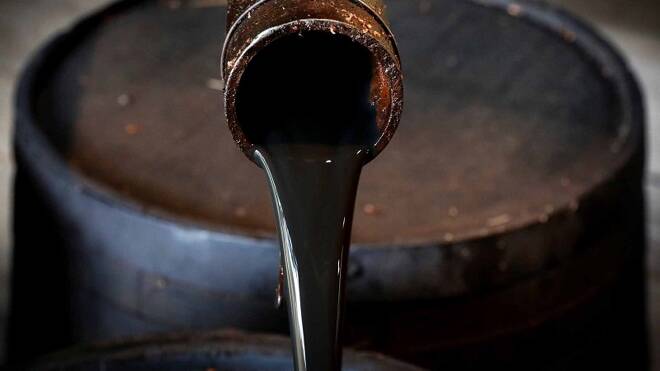Advertisement
Advertisement
Oil Price Fundamental Daily Forecast – Supply Concerns Outweighing China Growth Worries, Fed Tapering
By:
About 18% of the U.S. Gulf’s oil and 27% of its natural gas production remained offline on Monday, more than three weeks after Hurricane Ida.
A general calmness in the financial markets on Tuesday is helping U.S. West Texas Intermediate and international-benchmark crude oil futures recover from yesterday’s steep losses.
Traders have shifted their focus back to the main driver of the recent rally – U.S. supply tightness. However, they remain tuned into the potential impact on China’s economic recovery of the financial turmoil created by the nearly insolvent property group China Evergrande.
At 08:59 GMT, December WTI crude oil futures are trading $70.78, up $1.05 or +1.51% and December Brent crude oil futures are at $74.11, up $1.04 or +1.42%.
About 18% of the U.S. Gulf’s oil and 27% of its natural gas production remained offline on Monday, more than three weeks after Hurricane Ida, regulator Bureau of Safety and Environmental Enforcement (BSEE) said.
US Hurricane Damage to Cut Shell Oil Output Through Year-End
Royal Dutch Shell, the largest U.S. Gulf of Mexico oil producer, said damage to offshore transfer facilities from Hurricane Ida will cut production into early next year, slashing deliveries of a type of crude oil prized by refiners, according to Reuters.
Shell was the hardest-hit producer from Ida, which tore through the U.S. Gulf of Mexico last month and removed 28 million barrels from the market. The ongoing disruptions have hampered exports and raised crude prices, as Asian buyers searched for substitutes for the popular Gulf Mars grade.
Three weeks after the storm, about 40% of Shell’s production form the offshore region is still offline. Shell is the largest U.S. Gulf producer with eight facilities pumping about 476,000 bpd, according to researcher Rystad Energy. Overall, the U.S. Gulf produces 1.8 million bpd, or about 16% of U.S. oil output.
“Disruptions are now having an impact on total available crude for export from the U.S., not just the offshore grades,” said Krista Kuhl, an analyst with consultancy firm Facts Global Energy.
“Based on current pricing there is likely to be much less crude exported,” Kuhl added.
External Factors Likely to Drive Near-Term Volatility
On the bullish side, global utilities are switching to fuel oil due to rising gas and coal prices, and lingering outages from the Gulf of Mexico after Hurricane Ada that imply less supply is available, ANZ analysts said.
On the bearish side, the state of China’s economy is weighing on markets along with the upcoming decision from the U.S. Federal Reserve that could lead to the start of tightening monetary policy.
“While slowing Chinese economic growth and uncertainty around the (U.S.) Fed’s tapering timetable weighed on market sentiment, other developments still point to higher oil prices,” ANZ Research said in a note.
Daily Forecast
Later today at 20:30 GMT, the American Petroleum Institute (API) will release its weekly inventories report. It is expected to show another drawdown in crude oil supply for the week-ended September 17.
Last week, crude oil prices rose after the API reported a draw in crude oil inventories of 5.437 million barrels for the week-ending September 10. It exceeded the analyst expectations who had estimated a loss of 3.903 million barrels for the week.
The API also reported a draw in gasoline inventories of 2.761 million barrels for the week-ending September 10. Distillate stocks also saw a decrease in inventories.
For a look at all of today’s economic events, check out our economic calendar.
About the Author
James Hyerczykauthor
James Hyerczyk is a U.S. based seasoned technical analyst and educator with over 40 years of experience in market analysis and trading, specializing in chart patterns and price movement. He is the author of two books on technical analysis and has a background in both futures and stock markets.
Advertisement
